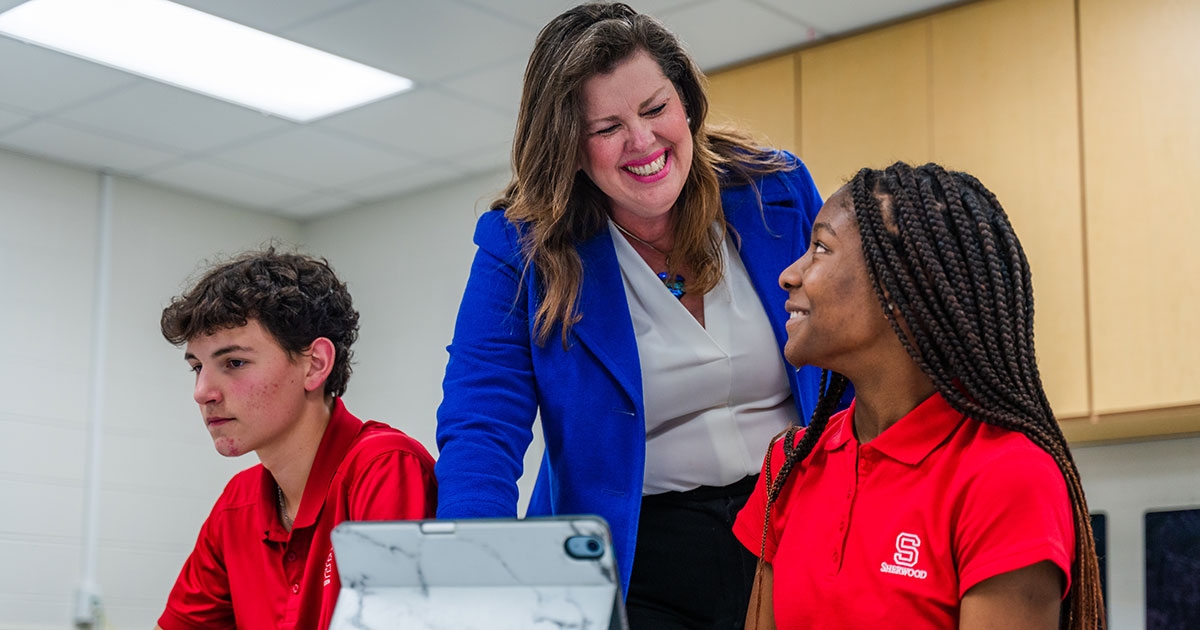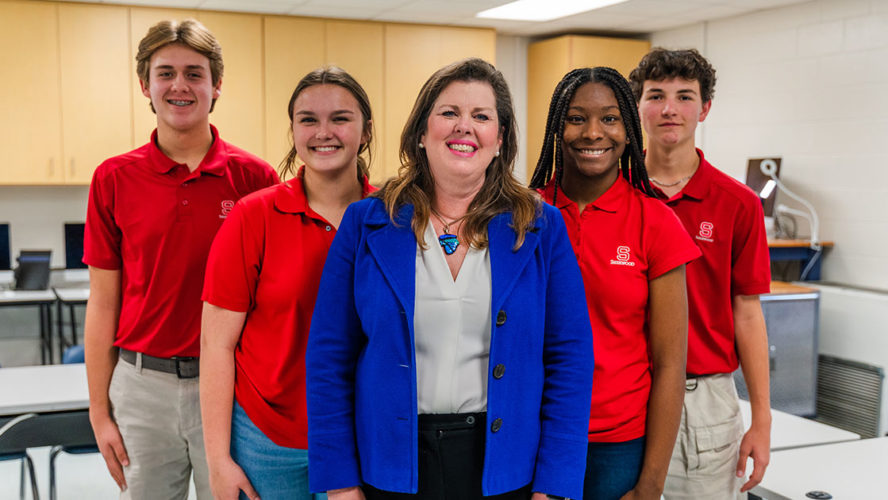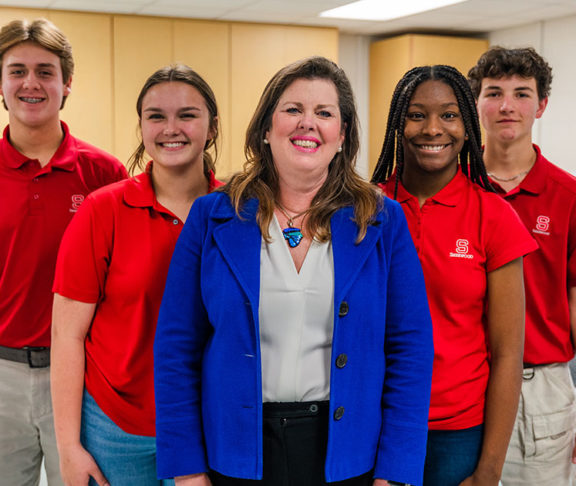Throughout the COVID-19 pandemic, a wealth of technologies designed to facilitate distance and hybrid learning emerged, but school districts adoption and support of these technologies varied. Vicki Davis, a teacher and IT director for Sherwood Christian Academy in Albany, Georgia, and the creator of the Cool Cat Teacher Blog and 10 Minute Teacher Podcast, talks about the need to embrace the right edtech, and shares tips for the best ways to adopt these innovations.
What is the biggest challenge you see facing educators today?
Exhaustion. With the substitute teacher shortage, teachers continue to lose their already too short planning periods to cover for colleagues who have to be out. Teachers, now more than ever, need tools and techniques to help them save time, adapt to the different knowledge levels of students, and engage their classrooms. You have to relate to educate. However, building relationships with students takes time and energy — things most teachers just don’t have right now.
Where have you seen education technology make the biggest impact in helping to overcome these challenges?
The greatest educational tools, in my experience, allow for formative assessment checks while teaching. Formative assessment isn’t for a grade; it checks learning while knowledge is forming and helps me as a teacher to understand where students are at that moment, so I can adapt to their learning levels. For example, when working on test review, my students play a game where I’ve loaded content. When the gameplay is done, I’m able to look at the problems that were missed the most and strategically review where students need it. Face time with students in the classroom is more valuable than ever, and effective formative assessment helps that time be well spent.
That said, it takes time to create many of these formative assessments, which causes planning time to be of strategic importance for me and my students’ success. With formative tools, I know before the test exactly who is struggling and needs extra help.
Right now, the best way to overcome the challenge of a lack of planning time is administrative leadership to help with recruiting substitutes, creatively using student time, and reducing additional duties so teachers can focus on fine-tuning their teaching approaches.

Teaching is more important than ever and students need their teachers to be prepared for class time. Unfortunately, when teachers are in schools without administrative support and with little planning time, we’re starting to see great teachers leave the profession. As professionals, many teachers would rather not teach at all than do it poorly. There are time-saving tools everywhere, but time is needed to implement them.
Where do you see the adoption of education technology headed in the upcoming school year?
During the pandemic, many previously unused technology tools became available to teachers. I would put most teachers and schools in one of three categories:
- The no-gos: Those who used technology because they had to and tried to force fit teaching methods into distance and blended learning without considering the pedagogical shifts to make it successful. Triage teaching got us through but wasn’t necessarily the best way to use tech. In this situation, many of these teachers, schools, and admittedly students don’t want to use the technology at all because students felt like they were on their own, teachers felt like they were talking to no one, and administrators knew it wasn’t working. Teachers and schools in this category are often disillusioned with technology and won’t even consider what it can do to help them. They think they have seen what technology can do but have not perhaps seen the best use cases of it.
- The way-to-gos: Some teachers (and schools) made a massive pedagogical shift, and as they are returning to the classroom, they are keeping what worked best from both distance and face-to-face to blend together successfully. Their schools are supporting them in their efforts, and learning has and is improving. This doesn’t mean things aren’t still hard, but it does mean these teachers have a totally new way of teaching and will not go back. These teachers also see that effective technologies forge stronger relationships with their students, and personal connections can be built around what content can be taught and learned.
- The where’d-it-gos: Those in this category are some of the most troubling to me. These teachers (and schools) were in the way-to-gos category, however, when time came for renewal of products and services that made teaching better, schools and districts didn’t renew what the teachers loved. These teachers spent time learning new products and services that were free for a time. Their practice improved, but now those apps are gone, or (even more troubling) some teachers are just paying out of pocket to not lose all of the things they created. Software apps aren’t like textbooks; when teachers invest their time in creating awesome lessons, and then those apps go away, teachers lose far more than an app, they lose momentum. Sometimes when the discouragement of starting over with another app or going back to a way that didn’t work before the pandemic, these teachers become like the apps they loved using and leave.
In the upcoming year, I think the best schools will continue to recruit great teachers, protect their planning time, and provide them with the apps and tools they need. Unfortunately, porting the creations of teachers from one school to another is also a problem. Teachers used to be able to move their PowerPoints with them on a thumb drive, but with today’s complex apps, portability of teacher-created content should be considered.
Additionally, while rosters and grade syncing is dramatically improved, one thing is not: the ability to easily move content between apps. This has got to change. Some apps are adding spreadsheet importing, however, it has got to become easier to move content, assessments, and data between apps.
Right now, teachers like me are spending an excessive amount of time entering content between platforms, looking at the data, and tabulating it by hand to measure student progress and create summative assessments in a different testing platform.
Sometimes I’m entering data in four or five different apps. I should be able to enter content once and send it to different apps with the click of a button, which should also help me measure student performance against standards.
Content portability and formative assessment aggregation are two things I predict will push forward apps. Without them, many teachers will either only use a few apps or continue to resist the workload required to enter their content into a variety of them.
I have also noticed some apps that have put politically-charged content into their programs. When this happens, I believe districts and schools will move away from those apps and never return.
Additionally, teachers need to be able to see the learning path and actual problems where students are having trouble so they can follow up in person. An app should be a partner with teachers in teaching, not an island where the teacher is oblivious to what is going on.
As we move towards the metaverse and the next version of the web with AR and VR experiences and opportunities for connection, content connections, trustworthiness, and transparency will become increasingly important.
There is so much potential in education technology and many of us teachers see this every day.

